Matador Network's Blog, page 1191
December 31, 2018
Smallest wild cats in the world

Everybody knows about lions, tigers, and jaguars, but most of the wild felines out there are small cats. They may be little — often smaller than the domestic cat — but what the small wild cats may lack in stature they make up for with daring attitudes and good looks.
Like their big cousins, the small cats are threatened with habitat loss, poaching, and conflict with humans and livestock. But because they don’t have high profiles in the media, the small cats receive less than one percent of the total conservation funding available for wild cats. As a result, most of the small cats remain understudied and under-protected.
Here’s a look at nine of the world’s smallest cats and their conservation statuses according to the International Union for Conservation of Nature (IUCN) Red List of Threatened Species.
If you believe that they deserve more attention and protection, visit the Small Wild Cat Conservation Foundation website where you can learn about various conservation projects and contribute to small cat research.
1. Rusty-spotted cat

Photo: Felineus/Shutterstock
The smallest feline in the world is the rusty-spotted cat native to the deciduous forests of India and Sri Lanka. Growing to all of 3.5 pounds in weight and 19 inches in length, it is a small cat with a big attitude.
Behind its big-eyed face and tiny body hides a highly agile and aggressive predator. The rusty-spotted cat is equally at home in the trees and on the ground, where it catches its prey (mostly rodents and small birds) using rapid, darting movements.
It is listed as “Near Threatened” on the IUCN Red List, and its population is decreasing.
Sri Lanka’s Wilpattu National Park is the best place to see the rusty-spotted cat in the wild. The local Bird and Wildlife Team are experts at tracking down the elusive felines.
2. Black-footed cat

Photo: Erwin Niemand/Shutterstock
The second contender for the title of the world’s smallest cat is the black-footed cat, native to Southern Africa. At 3.6 pounds, it is the smallest wild cat in Africa.
Often referred to as the “deadliest cat on Earth,” this tiny cat has the highest hunting success rate in the entire cat family. It hunts rodents and small birds, often consuming up to 14 prey items in one night.
The Black-footed cat is listed as “Vulnerable” on the IUCN Red List, with just over 9,700 mature individuals remaining in the wild.
The best place to spot a black-footed cat in its natural habitat is Marrick Game Lodge in South Africa’s Northern Cape.
3. Guiña

Photo: @claudiofvidal/Facebook
The smallest cat in the Americas, the 5.5-pound guiña or kodkod occurs only in Central and Southern Chile with parts of its range extending to the adjoining areas of Argentina.
While the guiña is an agile climber, it prefers to hunt on the ground, taking mainly small mammals, birds, lizards and insects.
It is currently listed as “Vulnerable” on the IUCN Red List, and its population is decreasing.
The best place to see guiña in the wild, including the unusual melanistic individuals, is Chiloe island in Chile. The Far South Expeditions offers four-day, three-night tours to the island to search for the rare mammals.
4. Flat-headed cat

Photo: Signature Message/Shutterstock
One of the oddest looking cats in the world, the flat-headed cat also has the unfortunate distinction of being the most endangered small cat in Southeast Asia.
It is listed as “Endangered” on the IUCN Red List, and the experts estimate that there are no more than 2,500 mature individuals left in the wild, with no single population exceeding 250 adults.
The cat owes its odd looks to its semi-aquatic lifestyle. Its flattened forehead, partially webbed feet, and very long and sharp canines are all adaptations for catching and killing slippery fish and other aquatic vertebrates.
You can see the flat-headed cat on the banks of Kinabatangan River in the Borneo’s state of Sabah. The award-winning Sukau Rainforest Lodge is located on the river in the heart of the flat-headed habitat.
5. Oncilla

Photo: FOTOGRIN/Shutterstock
A small spotted South American cat, the oncilla has a wide distribution from Central America to southern Brazil.
Weighing up to 6.6 pounds, it is the second smallest cat in the Americas after the guiña. It is a good climber, but it prefers to hunt on the ground, where it stalks its prey from a distance and then pounces to catch and kill it. Like most small cats, it hunts small mammals, birds and reptiles.
Recent genetic studies revealed that oncillas living in southern Brazil do not interbreed with their northern cousins. As a result, we now have to distinct species: the northern oncilla and the southern oncilla.
Both oncilla species are listed as “Vulnerable” on the IUCN Red List, and their populations are decreasing.
A good place to try spotting an Oncilla in the wild is the Bellavista Lodge near Quito in Ecuador.
6. Sand cat

Photo: Yair Leibovich/Shutterstock
The only wild cat to live in the true desert, the sand cat can be found in North Africa, the Middle East, and Central Asia. Weighing all of 7.5 pounds, this desert warrior is capable of killing venomous snakes like sand vipers, but mostly it preys on small rodents and birds.
The sand cat is well-equipped for surviving in the extreme climate of the desert. Its dense sand-colored fur protects it from the cold of the desert night, and the peculiar strands of black hair on its feet shield its toes from the scorching sand.
There is not enough information about the population size of the sand cat in the wild, but it is considered stable and listed as “Least Concern” on the IUCN Red List.
Due to its cryptic habits, the sand cat is not an easy animal to see in the wild. For the best chance of spotting it, head to Western Sahara with the UK-based Wise Birding Holidays.
7. Leopard cat

Photo: Margarita Steinhardt
The most common, or rather the least uncommon, wild cat in Asia is the handsome leopard cat, native to South, Southeast, and East Asia. The populations on the islands of Borneo and Sumatra have recently been classified as a separate species, known as Sunda Leopard cat.
At 8.4 pounds, it is the third smallest wild cat in Asia. An agile climber, the leopard cat often hunts rodents and insects in the trees.
The population of the leopard cat is considered stable, and it is listed as “Least Concern” on the IUCN Red List.
The best place to see it in the wild is the Malaysian state of Sabah in Borneo. It can be found in most national parks. The local Adventure Alternative Borneo is one of the best wildlife tour operators on the island.
8. Margay
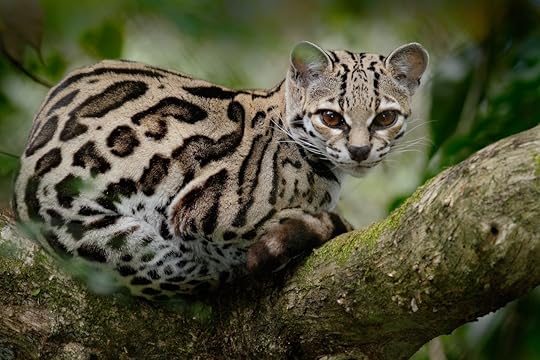
Photo: Ondrej Prosicky/Shutterstock
One of the most acrobatic wild cats, the Margay weighs only 8.8 pounds. It is native to Central and South America where it spends most of its life in the trees.
Equipped with flexible ankle joints that allow it to descend from trees head-first and a very long tail for balancing on the branches, the margay even gives birth in the trees.
The Margay’s other talent is mimicking the calls of a small monkey called a pied tamarin to lure the primate closer while the cat waits in ambush.
Currently, the margay is listed as “Near Threatened” on the IUCN Red List. And while the exact size of the wild population is not known, it is considered to be decreasing.
Because the margay spends most of its time among the dense foliage of tropical trees, it is a difficult cat to see in the wild. The Wildsumaco Lodge in Ecuador is a good place to try your luck spotting this talented acrobat.
9. Pallas’s cat

Photo: Margarita Steinhardt
Google the term “grumpy wildcat” and images of the Pallas’s cat will flood your screen. This fierce and exceptionally fluffy feline, native to the inhospitable mountain slopes of Central Asia, is famous for its surly facial expressions.
Weighing only 9.9 pounds, it appears much larger due to its thick coat of long grey fur — a necessary luxury for survival in the harsh climate of its high-altitude home.
Despite its wide distribution, the Pallas’s cat is listed as “Near Threatened” on the IUCN Red List, and its population is decreasing.
The best place to see the Pallas’s cat is the remote corner of China’s Sichuan Province, in the Ruoergai County on the Tibetan Plateau. Sichuan Birding, based in Chengdu, can arrange custom trips to Ruoergai. 

More like this: The world’s 7 big cats and where to see them in the wild
The post 9 tiny wild cats you didn’t even know existed appeared first on Matador Network.

Luxury cruise to Antarctica
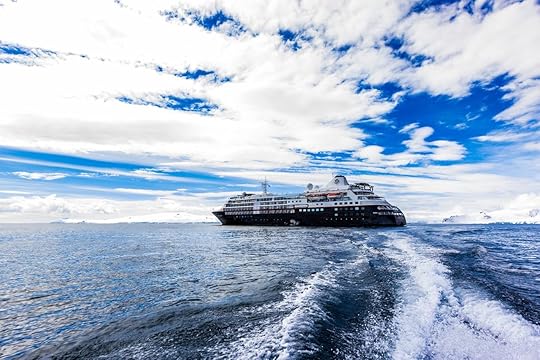
Colin O’Brady would’ve had a much better time if he’d ended each day eating popcorn in a hot tub.
Not to say the man who recently completed the first unassisted trek of Antarctica didn’t enjoy himself. Just that his trip probably would have been better if he could have spent his downtime soaking in hot water and enjoying a hot buttery snack.
Such is the life if you opt to see Antarctica aboard the most luxurious ship to ever hit the White Continent. The Silversea Silver Cloud erases all Shackleford-era memories of rampant frostbite and minimalist survival, replacing it with butlers, hot tubs, and imported wine.
The Silver Cloud is a 515-foot, 254-passenger cruise ship that underwent a $40 million renovation to reinvent itself as an ice-class vessel. This means it’s equipped with underwater ice-class bulbs for polar water navigation, sonar to detect pesky hazards like icebergs, and stabilizers to handle the sometimes 20-foot swells, so you won’t be recreating a Titanic first-class voyage anytime soon.
When it began going to Antarctica in 2017, it effectively became the Rolls Royce of the Arctic Ocean.

Photo: Silversea Cruises/Facebook
Butlers, scientists, and massive suites make the remote seem close to home.
Rooms aboard the Silver Cloud are all spacious suites, which on a cruise ship means they’re about the size of your average room at the downtown Hilton. Each suite has an ocean view, most with balconies, equipped with plush robes and Bulgari bath amenities. There’s a pillow menu and a mini-fridge your personal butler stocks with whatever you ask for.
The Silver Cloud has a full gym with group exercise classes, a running track around the top of the ship, and outdoor jacuzzis from which to enjoy the towering mountains made of ice and albatross soaring overhead.
Silversea also employs an impressive team of guides and experts who take time each day to explain to the 200-or-so guests the importance of what they’re seeing. Ornithologists give lectures on the penguins, albatross, and other birds. Geologists explained the origin of the continent. Historians tell you about the men who first set foot here and the hardships they faced — often while you sip on a nice cold glass of rosé.

Photo: Laura Grier
A treacherous journey made downright pleasant
Going to Antarctica isn’t like taking a weekend hop to Nassau. It’s the end of the Earth, and the fact that you can make it there and back in 11 days is a testament to human technology. The fact that it has operative WiFi is downright mind-blowing.
But it’s still not easy.
While the Silver Cloud makes some initial wildlife viewing stops in spots like the Falklands and South Georgia Island, you’ll still spend two to three days in each direction rolling through Drake’s Passage. Which is not for the faint of heart — or stomach.
For the next two days, your world is a floating see-saw. You walk down the narrow hallways of the ship bouncing off the walls like you’re stumbling home down Bourbon Street. The gym, when it’s open, affords you the chance to run rolling hills on a treadmill without pushing a button. Waiters masterfully balance trays of food at dinner while the sea reaches over the windows on either side of the dining room.

Photo: Laura Grier
While no level of pampering can take away the nonstop listing in Drake’s 12-to-20-foot swells, it can almost feel soothing when you’re lying on a memory foam mattress. And if you need some ginger ale, it’s only a phone call away.
If you are inclined to seasickness, though, we suggest buying Dramamine in bulk at Costco before you go. Some guests aren’t seen until the passage is over.
On the fourth morning of the voyage, you’ll order a bacon-and-cheese omelet with a couple of mimosas to your stateroom, and as you enjoy it looking out your balcony, you’ll see a large white object in the distance. This glacier — whichever one it may be — signals that you’ve finally arrived in Antarctica.

Photo: Laura Grier

Photo: Laura Grier
Like a scene from a Disney movie, you step out onto your balcony to get a better look and see dozens of what look like flying fish jumping out of the water. But as they swim closer to the ship, you realize they’re actually penguins, leaping out of their swimming formations to welcome you to their home.
The ship puts down anchor in a bay that looks like an icebound fantasy you didn’t even know you had. The images most conjure of the White Continent are of an unapologetic wasteland of black rock and white snow, which, while fascinating to visit, isn’t exactly postcard material. But your first stop on the peninsula proves completely otherwise.
Epic jagged mountains stick straight up out of clear blue water, covered in snow that’s painfully bright under the polar sun. The waters are clearer than even the most pristine parts of the Mediterranean — ocean protected from Earth’s pollution by currents circling the continent. An afternoon run around the albeit-short running track on the top deck has you stopping every few laps to get another picture of the imposing ice mountains against the bright blue sky.

Photo: Laura Grier
Stepping ashore on the world’s final frontier
Before going ashore you’re required to submit any clothing you’d wear to agricultural inspection, ensuring you’re not transporting any invasive species. You’re also warned to stay on the marked walking paths so as not to create deep footprints that unwitting penguins might fall into when waddling along. People must also stay 15 feet from all wildlife at all times.
You take a motorized Zodiac raft across the clear water to the shoreline and are immediately greeted by about half a dozen penguins. The animals in Antarctica don’t fear humans since most don’t do much other than take pictures.

Photo: Laura Grier

Photo: Laura Grier
Penguins, cute as they are, smell horrific. Looking at a colony onshore, the first thing you notice is how the ground under them is a deep, dark brown against the white of land. This isn’t melted snow. This is sometimes two or three acres of penguin shit that they all live on top of. Somehow Disney left this out of Happy Feet.
If you can stand the smell, the penguins will literally walk right up to you, but because you’re forbidden from feeding them, they won’t ask for much. They waddle along and slide down the mountains, and for that brief moment, you’re envious of their carefree summer vacations on land.

Photo: Laura Grier

Photo: Laura Grier
The expedition staff stands throughout the walking paths to answer any questions you have and identify the wildlife. It’s like having your own personal Animal Planet along for the ride.

Photo: Laura Grier
Life on the ship is the nicest resort you’ll ever stay at.
Back onboard, dinner is an event in and of itself. The Silver Cloud boasts four restaurants, including an outdoor hot stone grill which, while cold, is probably your only chance to ever dine al fresco in Antarctica. Expedition leaders host tables in the main dining room, where on select nights you’ll get a private audience with the resident experts.
After dinner, you can retire to one of the lounges, where all the drinks are included and expedition leaders hold court for you and your fellow guests. You may find yourself having an hours-long conversation with an onboard historian about the politics that shaped Antarctic tourism or playing Never Have I Ever with slightly uncomfortable guides who look at you a little funny the next day.

Photo: Laura Grier
The guests onboard fit your preconceived notions, and then they don’t. Yes, it’s an older crowd — the demographic with the time and money for such a trip skews a little gray. But you may also find yourself talking with a couple of commercial airline pilots who are taking their annual vacation. Or a personal trainer and his favorite client who saved up for years to make the voyage. Or a young wife in an open marriage who booked the trip to make her boyfriend jealous. If nothing else, you’ll find high dollar people often come with highly fascinating stories.
During the day, the weather can change by the minute. One afternoon you may find yourself taking the polar plunge — where guests jump in the 28-degree water — under clear blue skies. Then a few hours later be sailing in a blizzard through frozen ocean. Your afternoon landing on the continent is cancelled, replaced by a lecture about what you would have seen. And a snowball fight breaks out on the top deck, now engulfed in a couple of feet of snow.
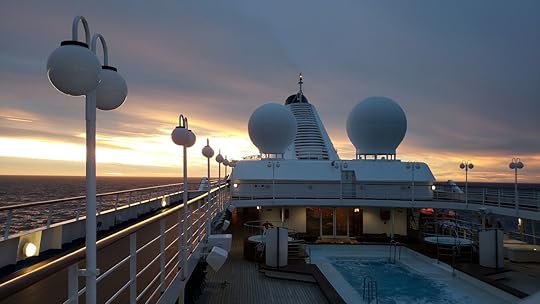
Photo: Laura Grier
The jacuzzi, however, stays open. And some of the younger women aboard take this opportunity to show off their stylish swimsuits in sub-freezing temperatures. They ask for popcorn to go along with their glasses of Pinot Grigio. Blizzard be damned.
After a couple more days of rocking through Drake’s Passage, you finally arrive at the Beagle Channel, the waterway separating Argentina from Chile in Tierra del Fuego. It’s a snow-capped mountain finale that ends in the Argentine cruise port/ski town of Ushuaia, where you’d be remiss to leave without dining at one of its famous steakhouses.

Photo: Laura Grier
The final day you bid your butler farewell and board a private charter to Santiago, Chile. The luxury is easy to get used to, and when you arrive at your hotel in Santiago, you’re a little disappointed when there’s not a pillow menu and free room service at three in the morning. But this is what happens when you spend two weeks on the most luxurious vessel to ever sail into Antarctica. Perhaps Mr. O’Brady should treat himself to seeing the continent this way on his next voyage through. 

More like this: The ultimate guide for planning an epic trip to Antarctica
The post Here’s what life is like aboard the most luxurious ship cruising Antarctica appeared first on Matador Network.

Why you get dehydrated on planes

Picture your last airplane experience. The movie selection was terrible, the food was even worse, and a subpar offering of booze was most definitely present — though you probably imbibed anyway. And to top it all off, there’s a good chance you were dehydrated. You can’t do anything about the first three issues, but there’s a clear reason as to why you were more parched than Spongebob in Sandy’s Dome.
“Very few situations dehydrate a person in the same way that a flight does, aside from being in an arid area with little access to water,” Caleb Backe, a health and wellness expert for Maple Holistics, tells Matador Network. “If you do get very dehydrated, you might experience a headache, nausea, dizziness, or lethargy.”
Basically, it all comes down to air circulation. In order for people to fly as comfortably as possible at 35,000 feet up, the cabin needs to be pressurized, and fresh oxygen needs to be pumped in. That air is about as dry as it gets, sitting at around 10 to 20 percent humidity. The Sahara desert, for comparison, is around 25 percent humidity. This lack of moisture in the air, coupled with the stresses of travel that lead to perspiration, is a perfect storm for bodily dryness. And that in-flight booze you’re drinking to mentally make it through the voyage? That’s not helping either.
“Humidifying a cabin would seem a simple and sensible solution, but it’s avoided for different reasons,” Patrick Smith, a pilot and host of Ask A Pilot, tells Matador Network. “First, to amply humidify a jetliner would take large quantities of water, which is heavy and therefore expensive to carry. Humidifying systems would need to recapture and recirculate as much water as possible, making them expensive and complicated. (They do exist: One sells for more than $100,000 per unit and increases humidity only by a small margin.) There’s also the important issue of corrosion. Dampness and condensation leaching into the guts of an airframe can be damaging.”
Boeing is working on solving this problem with the Boeing 787, but the vast majority of planes are dry.
When your body is surrounded by dry air, moisture from your face (think nose, eyes, and throat) is drawn to the dry molecules around it, creating an evaporation-like effect on the body. Your body’s fluids are essentially being sucked out of you without you even doing anything. There’s nothing you can do to keep your body from dehydrating, but there are a couple ways to keep the dehydration somewhat at bay.
The Aerospace Medical Association recommends drinking eight ounces of water for every in-flight hour, especially on longer flights. Spacing out the water consumption is also key, as your body can’t fully take advantage of the liquid when you pound an entire bottle of water at once — not to mention the excessive bathroom visits.
Compensating for alcohol and caffeine is also key. RJ Oenbrink from Appalachian Wellness tells Matador Network that “both suppress the anti-diuretic hormone, which is responsible for allowing the kidneys to concentrate urine and conserve water.” So make sure to sip an eight-ounce glass of water alongside every boozy beverage to combat the dehydration you get from drinking.
Packing hydrating snacks, including fruits, veggies, and yogurt can also be helpful. And for the love of god, avoid snacking on excessive salty peanuts and pretzels, despite the fact that they’re free. And don’t forget your personal hydration station: lotion, lip balm, and a solid bottle of nasal spray — all under the three-ounce size limit, of course. 

More like this: 10 must-have healthy essentials pro travelers pack in their carry-on
The post Why you get dehydrated on a flight and how to prevent it appeared first on Matador Network.

Brands that donate for conservation

Not to advocate consumerism, but you can actually do a bit of good with your dollar the next time you need to replace that tattered backpack or buy a new pair of skis. It takes a bit of research to find out who’s actually making a difference since “being green” is a trendy thing to do these days. These outdoors brands, though, really are eco-conscious, donating much-needed money to valuable environmental efforts. Here’s some of the good work they’re doing.
Columbia Sportswear
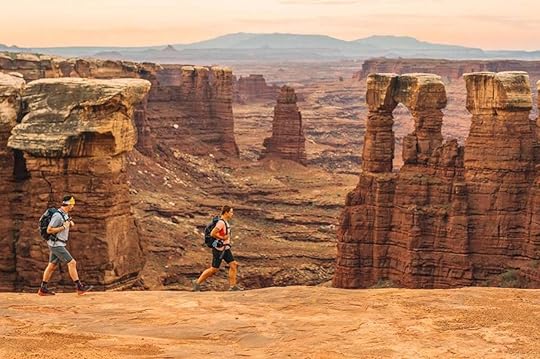
Photo: Columbia Sportswear/Facebook
Columbia contributes funds to environmental charities including The Ocean Project and The Conservation Alliance, but it also does something that you can directly take part in. The brand, which has produced outdoors gear since 1938, offers a generous discount to customers who trade in used gear when buying new stuff so that the brand can donate or recycle it.
Keen

Photo: KEEN/Facebook
Outdoor footwear brand Keen holds a quote from writer and noted environmentalist Edward Abbey on the front page of its website. It would be hard to do that without drawing immense criticism should the brand not strive for eco-action. It does just that through its Grants Program, which has awarded more than $500,000 to coastal preservation and environmental education programs since 2013.
Kelty

Photo: Kelty/Facebook
Kelty is a camping and outdoors brand built on a mission to get people, especially kids, off the couch and into the outdoors. Its support of the Wish for Wheels program puts kids on bikes and supports the annual Bike to Work Day across the United States. It also co-founded The Conservation Alliance along with Patagonia, The North Face, and REI.
Mountain Khakis

Photo: Mountain Khakis/Facebook
Mountain Khakis is an outfitter based in Jackson Hole, Wyoming, a place that is as beautiful as it is susceptible to climate change. Through its ambassador program, Mountain Khakis recognizes influencers in environmental awareness and activism and stands behind its efforts as a ‘brand sponsor’ of its efforts. The brand also partners with action programs including The Conservation Alliance and Outdoor Foundation to support its community-driven efforts.
Patagonia

Photo: Patagonia/Dan Patitucci/Facebook
If you’ve ever browsed through a Patagonia catalog, you know it’s no secret that Patagonia is all about protecting the lands it makes gear to utilize. What most brands utilize merely as a sales tool Patagonia uses as a full-on firestorm of activist content, with gear and sales pitches sprinkled in for good measure. It has donated over $89 million to 1% for the Planet and other causes since 1985 with additional effort going to grant funding and awareness programs in the United States and beyond.
Patagonia also offers repair options for many of its clothing and gear items to keep them in use longer. Founder Yvon Chouinard firmly believes that using items longer is the biggest thing the brand — and consumers — can do to reduce its environmental impact. For 2019, Patagonia has taken it a step further, making 100% of its jacket shells — all 62 styles of them — from recycled material.
Clif Bar

Photo: CLIF Bar/Facebook
Clif Bar takes an approach beyond simply donating to environmental causes. It works one-on-one with employees to help them make their homes and lifestyles more eco-friendly and then rewards them for doing so. It does the same thing with its suppliers, assisting them in making their facilities more sustainable and lowering carbon emissions, in turn putting out an energy bar that’s almost as green as the open spaces where it’s consumed. Founder Gary Erickson also reportedly turned down a nine-figure buyout offer because he didn’t want to jeopardize the positive impact Clif Bar makes with its profits.
The North Face

Photo: The North Face/Eliza Earle/Facebook
The North Face is another longtime leader in environmental activism. Its founders, Doug and Kristine Thompkins, are directly responsible for the preservation of land in Chile that allowed the country to recently open five new national parks and connect 17 parks via one massive thru-hiking trail. The Thompkins have for decades worked closely with Patagonia founder Yvon Chouinard on conservation efforts across the world, and they’re co-founders of The Conservation Alliance with Patagonia, REI, and Kelty.
How you can make a difference
One of the easiest ways you as a consumer can ensure that your funds are going in the right direction is to look for the 1% for the Planet seal when shopping at outdoor retailers. This indicates that the brand donates 1% of sales to the organization and its environmental efforts to fund grants, support campaigns, and get behind eco-friendly causes. If you don’t see the symbol, get your phone out and do a quick browse of the brand’s website before making a purchase. Those who work hard to protect our planet are usually not quiet when it comes to showing off their efforts. 

More like this: Brazil’s new president is a threat to the environment. Here’s what you can do about it.
The post Brands you had no idea donated part of their profits to conservation efforts appeared first on Matador Network.

9 popular Matador Instagram photos

People usually do at least one of three things as a year comes to a close: reflect on how the past year has gone, think up resolutions for the coming year, and party it up. 2018 was a great year for travel, with economies bouncing back and welcoming more tourism than ever, and it was also a year that people thought about ways to travel sustainably, as well as the impact of social media on the places they visit. Instagram has its pros and cons, but no matter what side of the debate you fall on, there’s no doubting its influence on inspiring others to get up and out there. From Mont Saint-Michel in France to colorful skies in Singapore, here are Matador’s nine most liked photos on Instagram in 2018.
1. Tianjin Binhai Library in Tianjin, China by Harimao Lee/@harimaolee
View this post on InstagramA post shared by Matador Network (@matadornetwork) on Feb 9, 2018 at 7:22am PST
2. Sunrise Point Cukul in Indonesia by Rdie K. Asmita/@rdie_photography
View this post on InstagramA post shared by Matador Network (@matadornetwork) on Jan 4, 2018 at 6:02pm PST
3. Mont Saint-Michel in France by Alexis Pifou/@_pifou
View this post on InstagramA post shared by Matador Network (@matadornetwork) on Jan 26, 2018 at 3:02pm PST
From the photographer:
“This place is not easy to access — it’s a little bit hidden and especially flooded in winter. So when I got there, I had to pass by mud and big puddles but it’s worth it. The place is hypnotic and completely out of time. It’s so quiet there and there’s nobody — no tourists, no locals, only some goats around you. I only would like to emphasis that [visitors] not degrade [it] at all and respect the place to keep it natural.”
4. Ice caves in Tyrol, Austria by Tom Klocker/@tomklockerphoto
View this post on InstagramA post shared by Matador Network (@matadornetwork) on Jul 25, 2018 at 6:01pm PDT
5. Fall foliage in Chiba, Japan by Dera/@dera_e_mon
View this post on InstagramA post shared by Matador Network (@matadornetwork) on Oct 11, 2018 at 9:01am PDT
From the photographer:
“That day I got up early in the morning and drove in a car for about an hour. I aimed to take a picture of the morning light spot but because of the cloudy sky I did not. Autumn scenery is one [of my] favorite pieces [to photograph].”
6. Snowfall in Kandertal, Austria By Paedii Luchs/@_paediil
View this post on InstagramA post shared by Matador Network (@matadornetwork) on Jul 20, 2018 at 6:19pm PDT
From the photographer:
“Doesn’t winter make you feel like a child again? It snowed pretty intensively as we walked along the lake shore.”
7. Cau Vang in Vietnam by Jason/@smashpop
View this post on InstagramA post shared by Matador Network (@matadornetwork) on Jul 31, 2018 at 2:01pm PDT
8. A lodge on the Faroe Islands by Josiah Gordon/@josiahwg
View this post on InstagramA post shared by Matador Network (@matadornetwork) on Jan 14, 2018 at 4:44pm PST
9. Colorful skies in Singapore by Dotz Soh/@dotzsoh
View this post on InstagramA post shared by Matador Network (@matadornetwork) on Jan 16, 2018 at 8:11am PST

More like this: Matador’s favorite places we visited in 2018
The post The 9 most liked photos on Matador’s Instagram in 2018 appeared first on Matador Network.

The biggest ways 2018 changed food

A lot changed about the way we eat — and the way we think about food — in 2018. We lost Anthony Bourdain, a man who opened people’s eyes to other cultures and changed the way we think about how food and culture interact. Samin Nosrat, the author of Salt, Fat, Acid, Heat and host of a show of the same name, taught everyone with a Netflix account a new way to think about cooking around the world. There was more authenticity in restaurants, and some places the media had written off for dead were revived. Sustainability efforts became impossible to ignore.
2018 was a big year. These are some of the most important ways how we eat changed.
Reverberations from the #MeToo echoed.

Photo: Sam Aronov/Shutterstock
In 2017, two weeks after sexual harassment allegations against Harvey Weinstein, the restaurant industry had its first big #MeToo moment. Twenty-five female employees accused John Besh, TV chef and owner of a restaurant group that had 17 locations at the time, of fondling workers and attempting to coerce them into having sex. This year, as more and more allegations against stars in the restaurant industry came forward, the industry tried to correct itself and struggled with what to do with the accuseds’ locations.
Despite taking temporary leaves or no longer serving as the face of the company, some men continue to profit from their restaurants. Mario Batali, arguably the most public accusation in the industry, is still earning money from his restaurants. Besh is still a partner in the restaurant group he started, now renamed BRG Hospitality. A few, like Charleston’s prominent food personality Randall Goldman, resigned and lost positions as regional spokesmen for the industry.
Thousands of people are employed by the accused men. Shutting down their businesses means some of the people who were victimized will lose jobs, while keeping the restaurants open sends a message to the women who were harassed that these men can, in a way, get away with it.
The accusations have allowed more open conversation in restaurants. There’s a lot of work left to do, but steps are being taken to right a notoriously toxic industry. The new CEO of Besh’s restaurant group, Shannon White, opened an anonymous tip line, and there’s a more open dialogue surrounding issues the industry faces. There will be more reckoning in 2019 as people slowly attempt to right the wrongs that working in hospitality is known for.
The war on straws started, as did the push for sustainability in food.

Photo: setthawit yantaporn/Shutterstock
On January 12, 2018, the Surfrider Foundation announced that it was “the year we say goodbye to straws.” Who would have guessed how right the Surfrider Foundation would be. Seattle banned plastic straws in July, California passed a law to ban full-service restaurants from automatically handing out plastic straws, Portland threatened straw restaurants with a $500 fine, and the European Union agreed to reduce single-use plastics by 2021. That’s not to mention the many restaurants that announced a straw stoppage, including Shake Shack and Starbucks.
Using plastic straws with abandon is far from the worst crime a polluter can do, and banning straws won’t make all that big of a difference in the overall scheme of things. There are also several problems associated with such a ban. For one thing, there’s the very real issue of people with disabilities who need straws (although thought-out straw bans allow restaurants to have them on hand for people who need them). Straws are also a very small percentage of the overall amount of plastic filling up our landfills and creating trash piles in our oceans.
It wasn’t all for naught, however. 2018’s straw fury was a harbinger for what’s to come on the sustainability front in the food world — and hopefully the beginning of the end for single-use plastic.
CBD opened the door for cannabis in food.

Photo: Infinity Time/Shutterstock
Cannabidiol, or CBD, is the compound in cannabis that doesn’t get you high. It also peaked in 2018. Thanks to its semi-legal status (it’s classified as a Schedule I drug like heroin, but it’s rarely prosecuted and can be produced from legal hemp plants), it became present everywhere — including coffee shops, bars, and restaurants. It was added to tea and coffee, and CBD tinctures or little CBD gummy bears were put in cocktails at top bars in New York and California (for a significant upcharge, of course).
Then came the backlash. California banned bars from serving CBD, and it looks like the church and state separation for bars and restaurants in 2019 will be alcohol and cannabis products. While the trend built up over a couple of years and the hype reached a new level in 2018, the real impact it will have is how it’s setting things up for the future. More and more states are legalizing cannabis — all cannabis, not just CBD — and they’re having to deal with how to regulate it and where it can be consumed. Some things to look out for include more businesses like West Hollywood’s incoming cannabis cafes.
Food “museums” and pop-ups showed us how we really feel about food.

Photo: The CADO/Facebook
The chase for Instagram fame wasn’t limited to bars and restaurants making increasingly over-the-top menu options. The values of our complicated relationship with food shined strong with the influx of “museums” and pop-ups designed solely for the sake of the ‘gram. If the idea of a museum is to show us what we as a culture think is important and venerated, then 2018 informed us that pizza, avocados, ranch dressing, and pools of sprinkles are the pinnacle of food.
2018 saw the opening of CADO (an avocado museum underwritten by the California Avocado Commission), the Museum of Pizza (a Brooklyn Instagram haven with sexually-charged advertisements), and Cheat Day Land (a photo-ready LA spot designed for fit people to take pics with cheat day foods like doughnuts).
Then there were the bars that were completely redesigned just so people can order a drink worth posting. There was the Champagne bar, a spring break beach bar in Denver, a Lego bar basically asking for a lawsuit, and all the many pop culture themes like Wayne’s World, Deadpool, and Alice in Wonderland. Those that didn’t completely redecorate got in on the social media madness with viral stunts like KFC’s fried chicken sunscreen and rotating Colonel, IHOP temporarily changing its name to IHOB in honor of its burger menu, and Popeye’s emotion support fried chicken.
It’s easy to blame this on the increasing need for businesses to create an experience for people who are always on their phones. Social media-focused locations aren’t an inherently bad thing, though, and anyone who says that is probably just a constant curmudgeon without any followers. When they’re both shallow and ephemeral, however, it’s not a good sign for our collective food knowledge.
Applebee’s proved there’s a way for chains to stay relevant: cheap booze.

Photo: jejim/Shutterstock
In 2017, a version of the headline “millennials killed the casual dining chain” ran across numerous national publications. Everything from TGI Fridays to Buffalo Wild Wings to Applebee’s was in danger of dying out because millennials didn’t eat at them, the stories stated, which meant the chains were all going to close and hungry, chain-loving baby boomers were going to have nowhere to eat. But by November 2018, Brian Sozzi, editor of Yahoo Finance, wrote a piece titled “Why Applebee’s is one of the hottest restaurants in America.” Stephen Joyce, CEO of Applebee’s parent company Dine Brands, went so far as to say, “I think Applebee’s has really hit its groove — this is truly our time.”
Applebee’s time came on the shaken backs of $1 and $2 cocktails. Turns out all you have to do to bring back the youth is offer them a cheap way to get drunk (and a sugar rush — then crash — as well). The rotating monthly drink specials garnered free attention for the brand and brought people in who bought some cheap Dollaritas and then stayed for some (slightly) more expensive apps and meals. We’ve moved on from people on social media ironically commenting on stories about $1 drinks that they now have a reason to go to Applebee’s, to people actually wanting to go to Applebee’s.
For all the big moves local and artisan food is making, the chains aren’t dead yet. If each chain jumps on the drink deals formula Applebee’s perfected in 2018, then the casual dining chain funeral won’t be held anytime soon. 

More like this: The 13 wisest things Anthony Bourdain said about travel
The post 5 of the most important ways 2018 changed how we eat appeared first on Matador Network.

The history of kürtőskalács
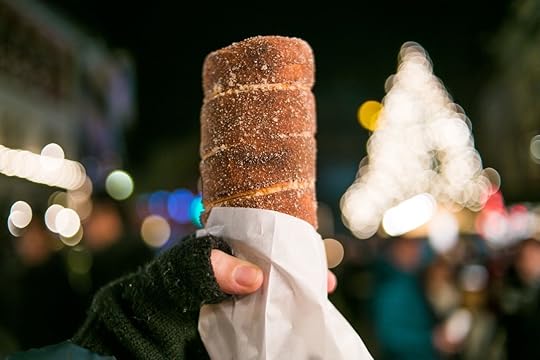
Wherever you go in Hungary, you’re likely to find a hollow funnel cake called kürtőskalács, or chimney cake. The thin, sweet bread is covered in butter and granulated sugar before being roasted to a golden brown for just the right crunchy to soft ratio. The first known recipe dates back to Countess Maria Mikes in 1784, but, according to legend, kürtőskalács were around for centuries before that and once saved a city under siege from starvation.
Scholar and writer Balázs Orbán recorded the story of kürtőskalács in 1868. The dessert, he wrote, was invented by women in what is now Sekler Land, the Hungarian-speaking region of Transylvania, during the Mongol invasion in 1241. When the Mongols invaded the countryside, the people of Máréfalva retreated into caves in the hills above the village. The Mongols followed them, but they couldn’t get to the protected area. Instead, they laid siege to the caves to try and starve the Seklers out. As the siege dragged on, both sides started running out of food. The Seklers knew the army waiting outside had just as little resources as they did, however, and the women in the cave came up with a plan to fool the invaders.
They took all of their leftover flour and mixed it with water and ash from the fireplace to make it seem larger. Then, they rolled it on a long wooden pole and baked it, creating a bread that seemed large but was hollow on the inside. The Seklers held the food out of the caves for the enemy to see, essentially saying, “Look how well we still live, while you’re starving.” Seeing this, the Mongols saw no other choice and left.
Whether or not the legend is true (a version of similar hollow breads are found throughout Europe and likely date back to ancient Greeks), it’s come a long way since those early years. Hungarian nobility made it popular in the 18th century, but then popularity dipped during the years that the region was walled off by the USSR. After the fall of the wall when all of Romania — including the Transylvania region — once again opened to tourists, visitors from Hungary went to the Sekler-Hungarian villages, where locals sold kürtőskalács. The bread became the image of Transylvania and the Sekler-Hungarians in Hungary, and by the middle of the 1990s, it was popular all over both countries.

Photo: Kseniia Perminova/Shutterstock
Today, you can find kürtőskalács made with ground walnuts, powdered cinnamon, chocolate, and pretty much any other topping you can imagine. Sometimes the hollow middle is filled with whipped cream. The long, pipe-like bread (kürtö means “stovepipe” and kalács means “sweet bread”) is eaten in strips that easily tear off from its main body. It’s no longer served solely during holidays and celebrations, and can be found year round.
Other countries have different names for kürtőskalács. In Romania, it’s also known as cozonac secuiesc. German-Saxons call it schornstein kuchen. A variation that lacks the caramelized sugar glaze is popular in Slovakia and the Czech Republic, where it’s called trdelník. The Polish call it it kurtoszkalacz or węgierski kołacz.
You don’t need to go to Eastern Europe to taste one for yourself, though. Kürtőskalács are made around the world. A New York City-based company called Twister Cakes uses a traditional Transylvanian recipe and ships them nationwide.
Still, the best way to enjoy kürtőskalács is to buy it hot from a vendor in Transylvania or Hungary. Part of the fun is watching them make it, and nothing compares to a fresh-off-the-coals piece of kürtőskalács.
In Transylvania, you’ll find permanent stalls selling kürtőskalács made onsite in every Hungarian-speaking town and every tourist destination, from Tusnad to Poiana Brasov and Turda Gorge. In Hungary, Budapest is one of the best cities to buy kürtőskalács. Look for Vitéz Kürtős, which is run by a famous Transylvanian family from Székelyudvarhely and has permanent stalls in the Csillagvár Shopping Center in the 3rd District and at the Budapest Zoo. On Budapest’s main street, Váci utca, head to Molnár’s Kürtőskalács. Though you’ll pay more for it there, you can sit and enjoy a historical treat on one of the world’s best known and most attractive pedestrian shopping streets. 

More like this: How ‘ruin bars’ became the hottest drinking spots in Budapest
The post How this funnel cake from Transylvania saved a city under siege appeared first on Matador Network.

Most beautiful wooden churches

Not all churches are elaborate stone and marble structures like Westminster Abbey or Notre Dame. Some of the coolest churches are structures made of wood that might seem simple at first glance but are actually quite intricately built — some without using even a single nail. The wooden churches found in Europe and Eurasia represent cherished architectural styles from bygone eras, and they’re pretty eye-catching to boot. Here are nine of the most amazing wooden churches you need to check out.
1. Church of the Holy Trinity in Gomel, Belarus
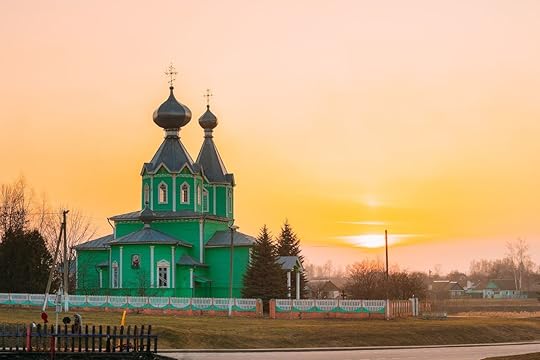
Photo: Grisha Bruev/Shutterstock
There are several wooden churches in the Gomel region of Belarus, among them this bright green Orthodox holy site near the town of Dobrush. Officially called the Church of the Holy Trinity, this colorful parish is in good company with the blue, pink, yellow, and red churches that decorate the region. A handful have been nominated for UNESCO designations, and while the Church of the Holy Trinity has yet to be officially recognized for its historic, architectural, and aesthetic value, it’s still one of the most fun churches you’ll see in Eastern Europe.
2. Búðir Church in Iceland
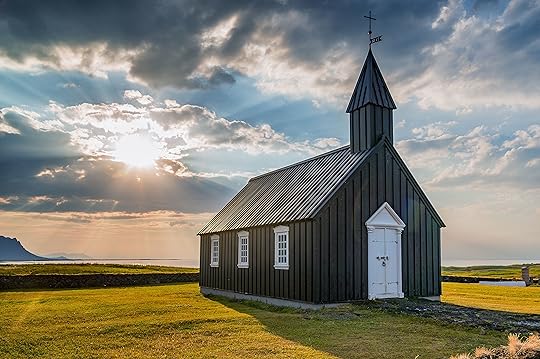
Photo: Jacques Tarnero/Shutterstock
Yes, Búðir Church is made of wood, but the first thing you’ll notice about the Icelandic landmark is that it’s painted completely black save a white door and window frames. Located on the Snæfellsnes peninsula, the church is surrounded by an expanse of black lava rock, which seems fitting given its matching facade. What we see today is a recreation of the original chapel, completed in 1987, after the initial structure that was built in 1703 was torn down due to poor churchgoer turnout. These days, Búðir Church is more famous as a photography subject than a place of worship.
3. Church of the Transfiguration on Kizhi Island, Russia

Photo: jejim/Shutterstock
The Church of the Transfiguration is an important part of the Kizhi Pogost historical site on Kizhi Island in northwest Russia. The whole pogost was inscribed by UNESCO in 1990 for its architectural significance, but many consider the wooden church the star attraction due to its master craftsmanship; it was created entirely out of interlocking wooden logs using no nails whatsoever. The church also has 22 grand cupolas — the largest and most central measures around 120 feet — and a gilded wall displaying more than 100 icons.
4. Greek Catholic wooden church in Dobroslava, Slovakia

Photo: TTstudio/Shutterstock
This church in northeastern Slovakia dates back to 1705. Two additional chapels were built in 1932, and the whole site saw reconstruction efforts in 2002 to help restore and preserve both the wooden exterior and Baroque interior. Of particular note is the 18th-century iconostas found inside, a decorative wall featuring New Testament figures that separates the church’s nave from its sanctuary.
5. Wooden churches in Pirogovo, Ukraine
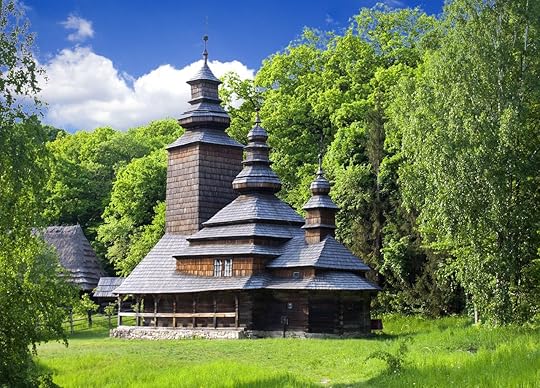
Photo: Skylines/Shutterstock
Pirogovo is hardly a household name, but if the Ukrainian village just outside of capital city Kiev is to become famous for anything, it’ll be for its wooden churches. The most iconic wooden churches are found at the Pyrohiv Museum of Folk Architecture (Pyrohiv being the Ukrainian name for Pirogovo), which were built between the 17th and 20th centuries. Visitors will also find other cool architecture pieces on site, including cottages and windmills tracing as far back as the 16th century.
6. Church of St. Nicholas in Izmailovo, Moscow

Photo: Marco Rubino/Shutterstock
Anyone who knows anything about Russian architecture knows about the Kremlin in the Red Square, but far fewer people know about this miniature Kremlin in Moscow. This might have something to do with the fact that it was only completed in 2007 or that it was never meant to be an actual defense fortress but rather a cultural center. Among museums and a craft market, visitors will find the tallest wooden church in Russia here, the Church of St. Nicholas, which looms roughly 150 feet over Izmailovo.
7. Wooden churches in Maramureș, Romania
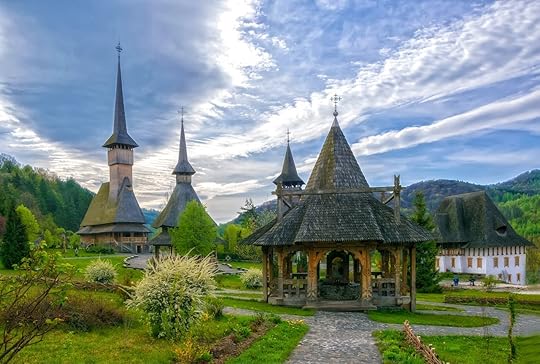
Photo: Haidamac/Shutterstock
Eight wooden churches dot the landscape of Maramureș. No two are exactly alike, and together they comprise a UNESCO site that exemplifies a mix of Orthodox and Gothic religious and architectural elements. All eight churches are made of timber, and each displays a shingled roof and a tall, thin clock tower — both traditional features of northern Romanian architecture.
If you decide to visit Maramureș to see these churches for yourself, be sure to schedule a detour to the nearby Săpânța Cemetery, also known as the Merry Cemetery because of its colorful grave sites and memorials featuring paintings of the deceased.
8. Heddal Stave Church in Telemark, Norway
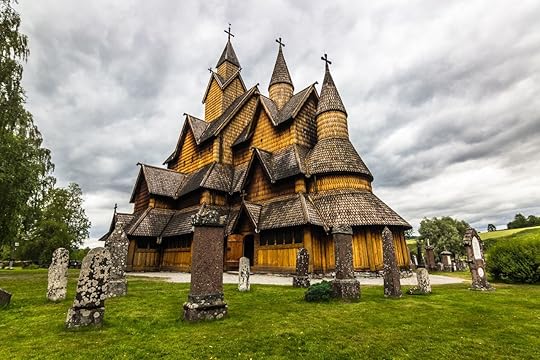
Photo: RPBaiao/Shutterstock
It’s estimated that at least 1,000 stave churches were built in Norway during the 12th and 13th centuries. Today, only 30 or so remain; Heddal is the largest among them. Legend has it that the church was built in just three days although new decor and details, including a series of rose paintings, were still being added as late as the 16th century. This church, like the Church of Transfiguration on Kizhi Island in Russia, was built without any nails or glue. It’s still operational to this day and regularly hosts events like weddings, particularly during the summer. Visitors are welcome during the week but not on Saturdays or Sundays.
9. Wooden churches in southern Małopolska, Poland

Photo: tramper79/Shutterstock
Not one but six wooden churches were built in little villages across southern Poland during the Middle Ages. Their architectural value lies in the way timber logs were positioned horizontally to secure the structures, a medieval technique used in many Roman Catholic churches around Northern and Eastern Europe. Inside, Gothic decor and painted walls and ceilings add another layer of significance to these simple yet impressive (and remarkably well-preserved) UNESCO sites. 

More like this: 7 amazing Russian churches that seem right out of a fairytale
The post 9 amazing wooden churches you need to check out appeared first on Matador Network.

Woodstock 50th anniversary festival

The town of Bethel, about 90 miles from New York City, was the original site of the Woodstock Festival in 1969. By some estimates, 400,000 people attended the original event, which featured artists such as Jimi Hendrix, Carlos Santana, and Janis Joplin. In 2019, a three-day music festival will take place at the same site to mark the 50th anniversary of the legendary event.
The event will be called the Bethel Woods Music and Culture Festival, and will take place on August 16-18, 2019 at the Bethel Woods Center for the Arts. The promoters plan to feature well-known musical artists spanning multiple generations, along with TED-style talks and cultural exhibitions. A report released by the center promised a “pan-generational music, culture, and community event” that, in addition to music, will feature presentations from tech leaders and futurists. An onsite museum will feature multimedia exhibits and artifacts from the original festival and will be open to the public throughout the event.
“Fifty years ago, people gathered peacefully on our site inspired to change the world through music,” said BWCA CEO Darlene Fedun in a statement. “As the stewards of this historic site, we remain committed to preserving this rich history and spirit, and to educating and inspiring new generations to contribute positively to the world through music, culture, and community.”
The Bethel Woods Center for the Arts hosts live music and special events throughout the year, and also features a farm-to-table restaurant, a family zone, and plenty of tribute areas honoring the legendary festival that put the facility on the map. Full lineup details and tickets will be announced in early 2019. 
H/T: The Independent

More like this: 7 crazy festivals where you get to throw stuff at people
The post Woodstock 50th anniversary festival to take place at original site appeared first on Matador Network.

Two female travelers killed by ISIS

Photo: Louisa Vesterager Jespersen, one of two Scandinavian tourists killed in Morocco (left). The Village of Imlil at the foothill of the Atlas Mountains, Toubkal National Park, Morocco (right).
Members of the Islamic State are suspected of killing two female Scandinavian tourists in Morocco two weeks ago. Louisa Vesterager Jespersen, 24, from Denmark, and Maren Ueland, 28, from Norway, were found on Monday, December 17 in the Atlas Mountains in Morocco with knife wounds to the neck. Four men, who pledged allegiance to the Islamic State in a video shared on social media, were arrested shortly after the incident. By Monday, December 31, an additional nine men have been arrested in connection to the case, according to Morocco’s Central Bureau for Judicial Investigations.
Norwegian authorities noted that a separate video showing the killings of the two travelers was likely to be real. The incident is being investigated as a terrorist attack.
The pair had been trekking and camping at the foothills of Mount Toubkal, North Africa’s highest peak, a popular destination for outdoor enthusiasts. 
H/T: Reuters

More like this: Explosion near Giza pyramids tour bus kills three tourists, injures 11
The post 13 arrested in murder of two Scandinavian female travelers killed in Morocco appeared first on Matador Network.

Matador Network's Blog
- Matador Network's profile
- 6 followers



